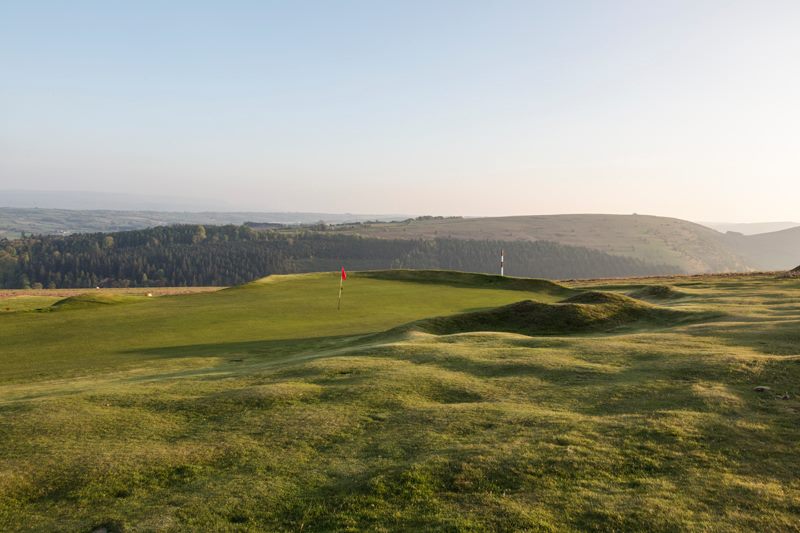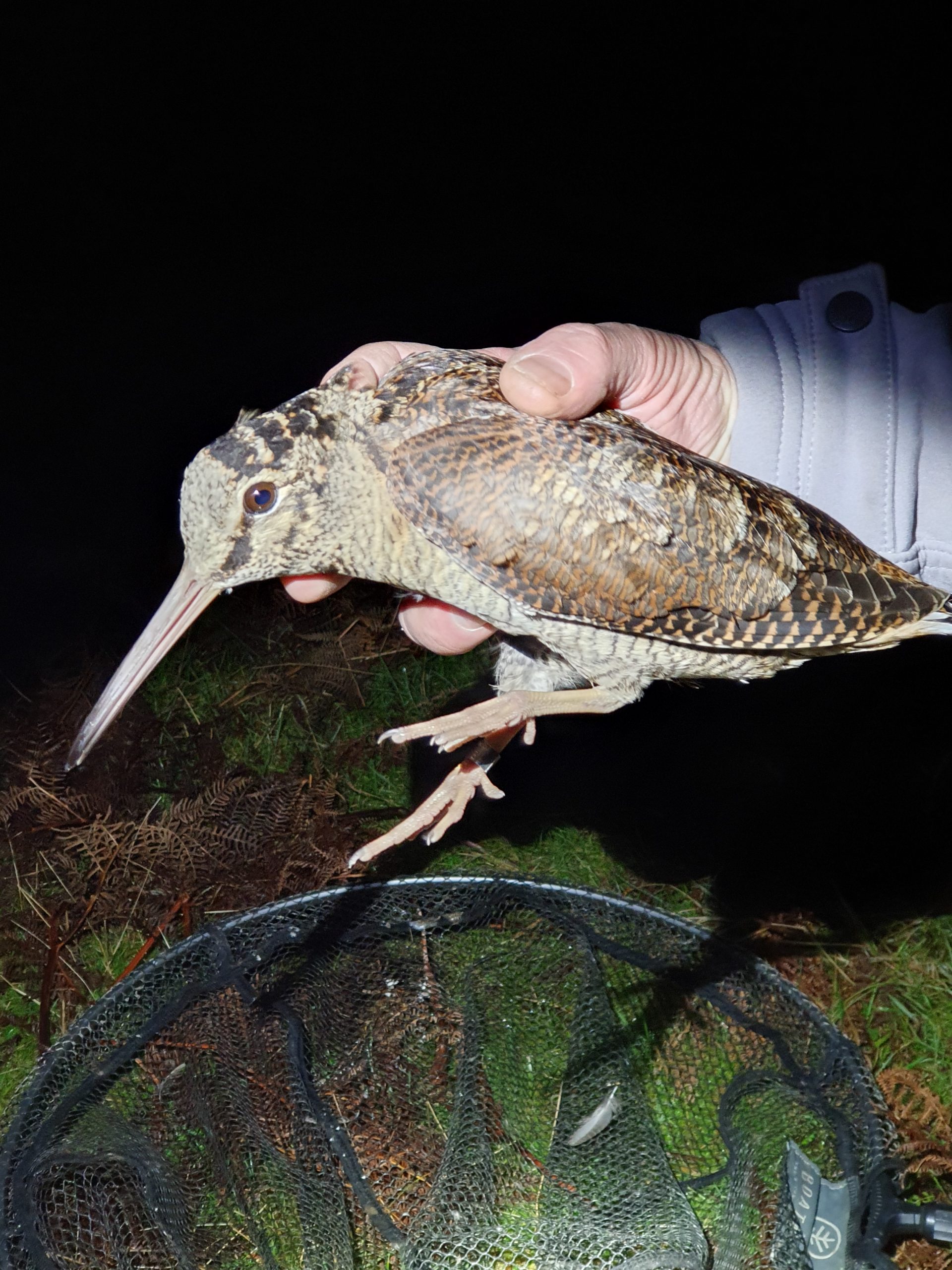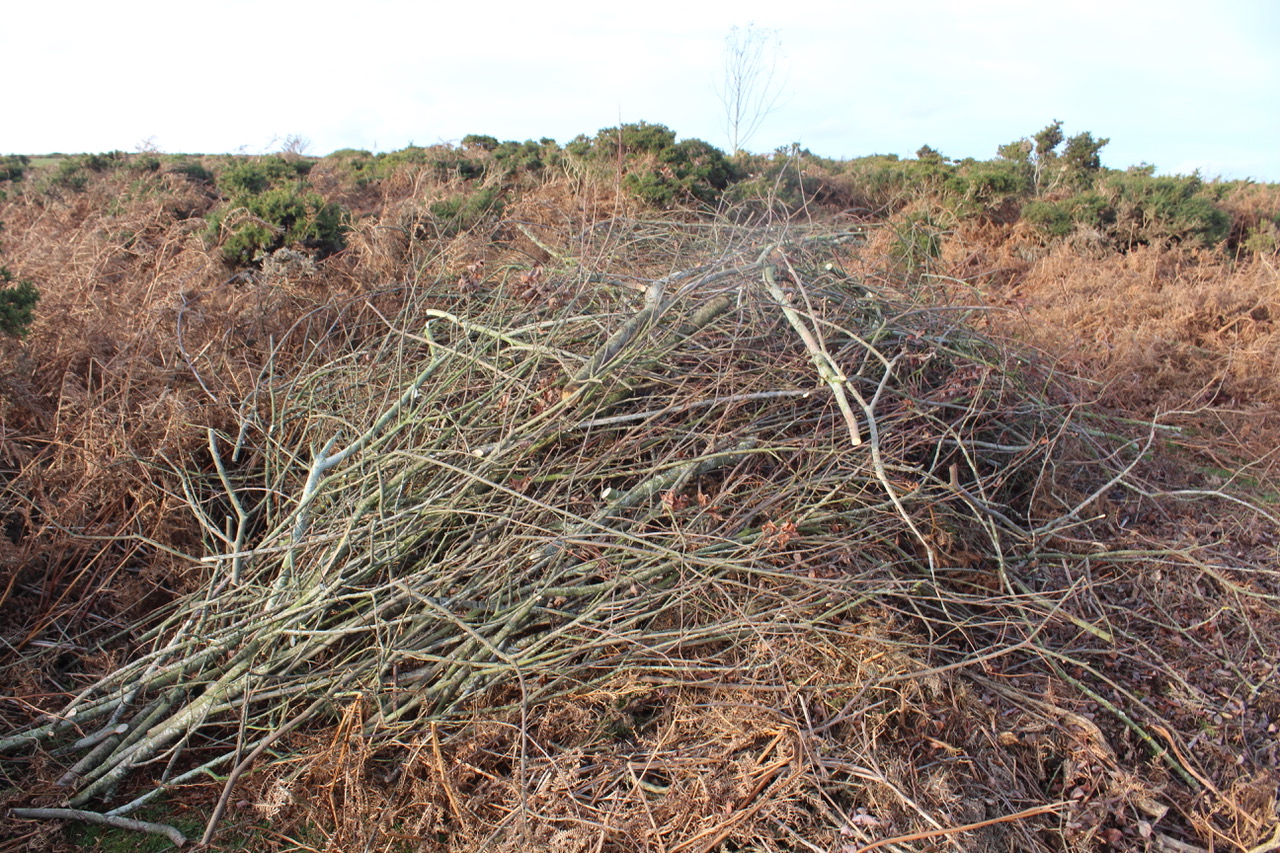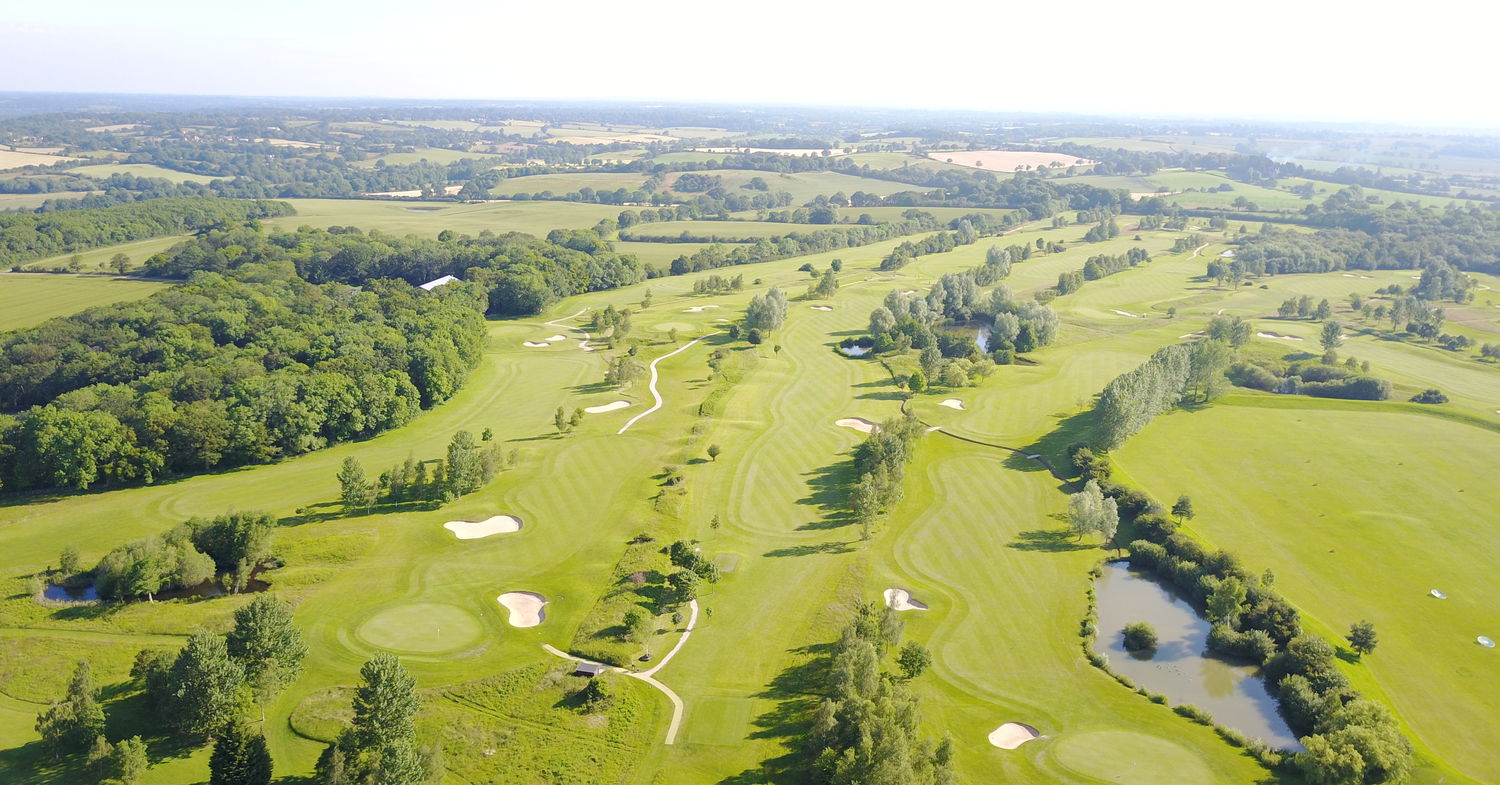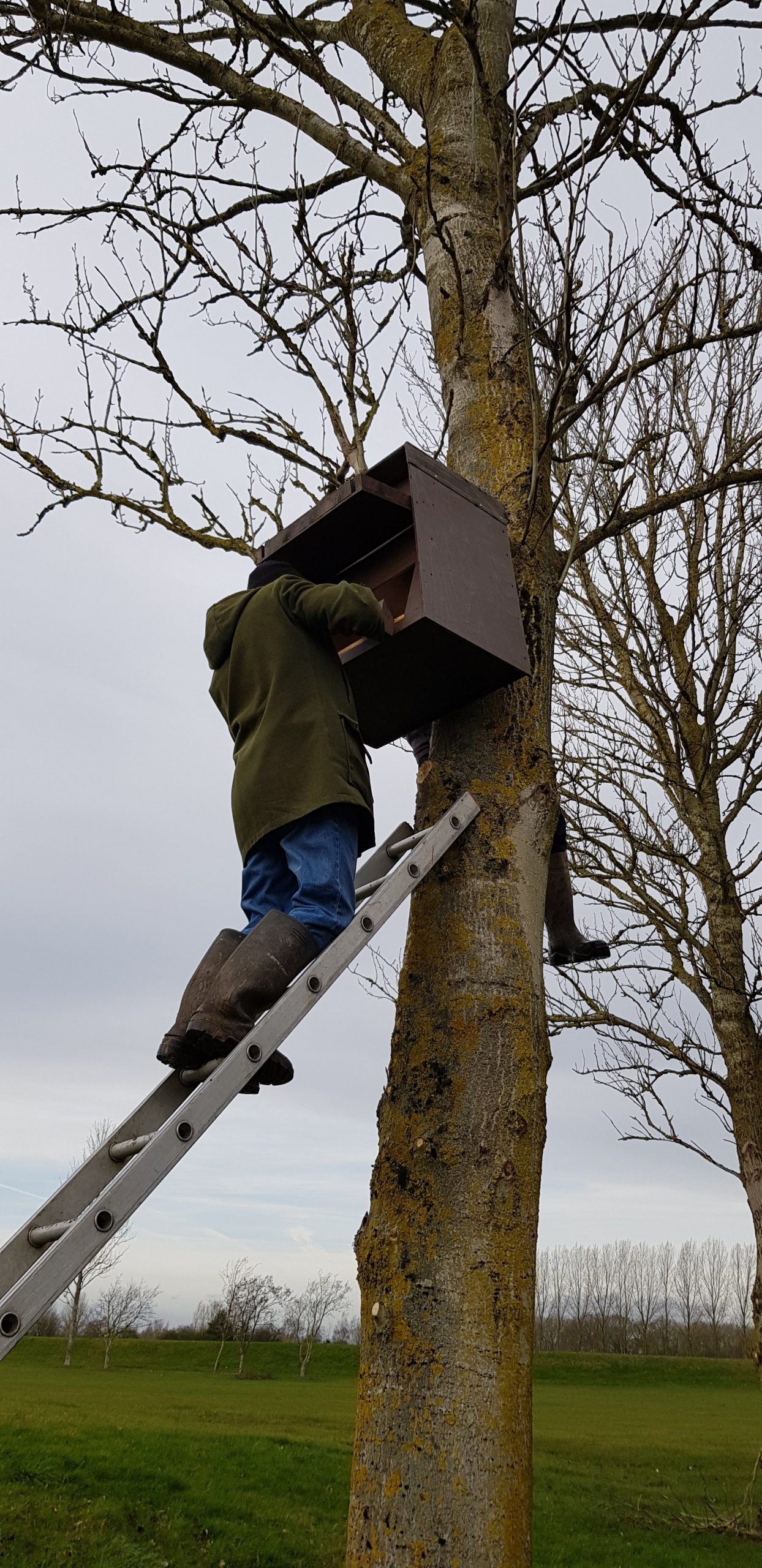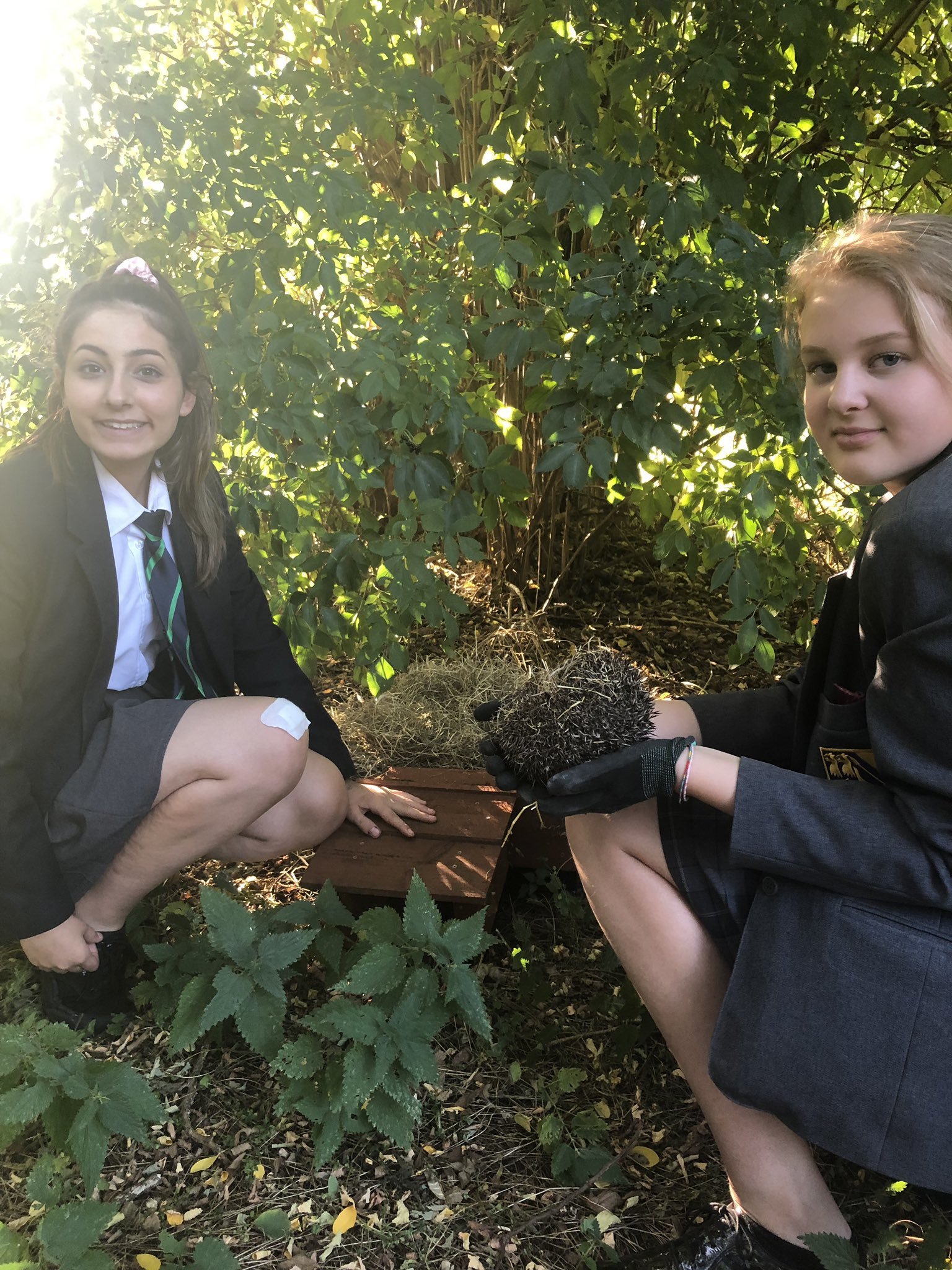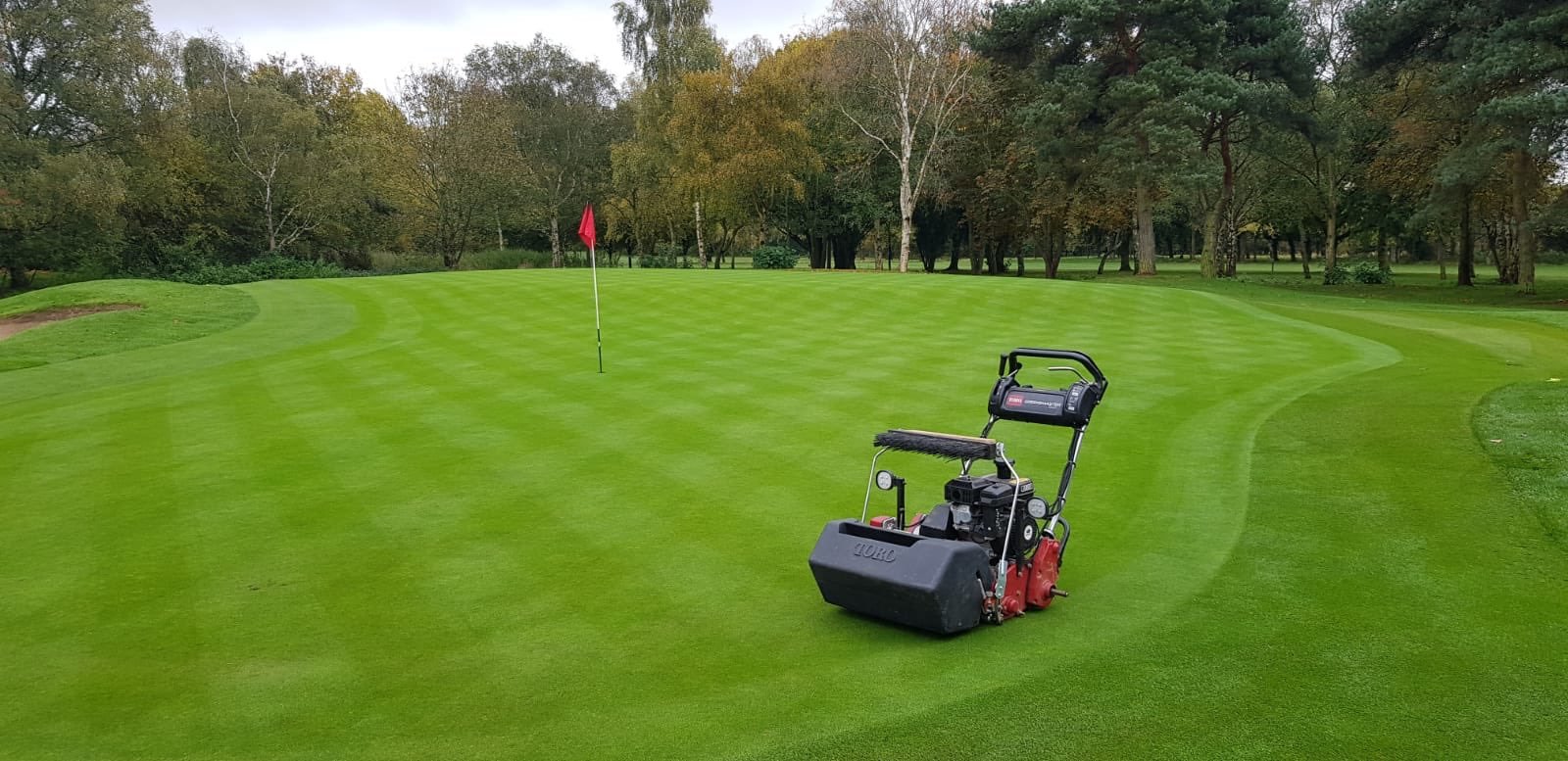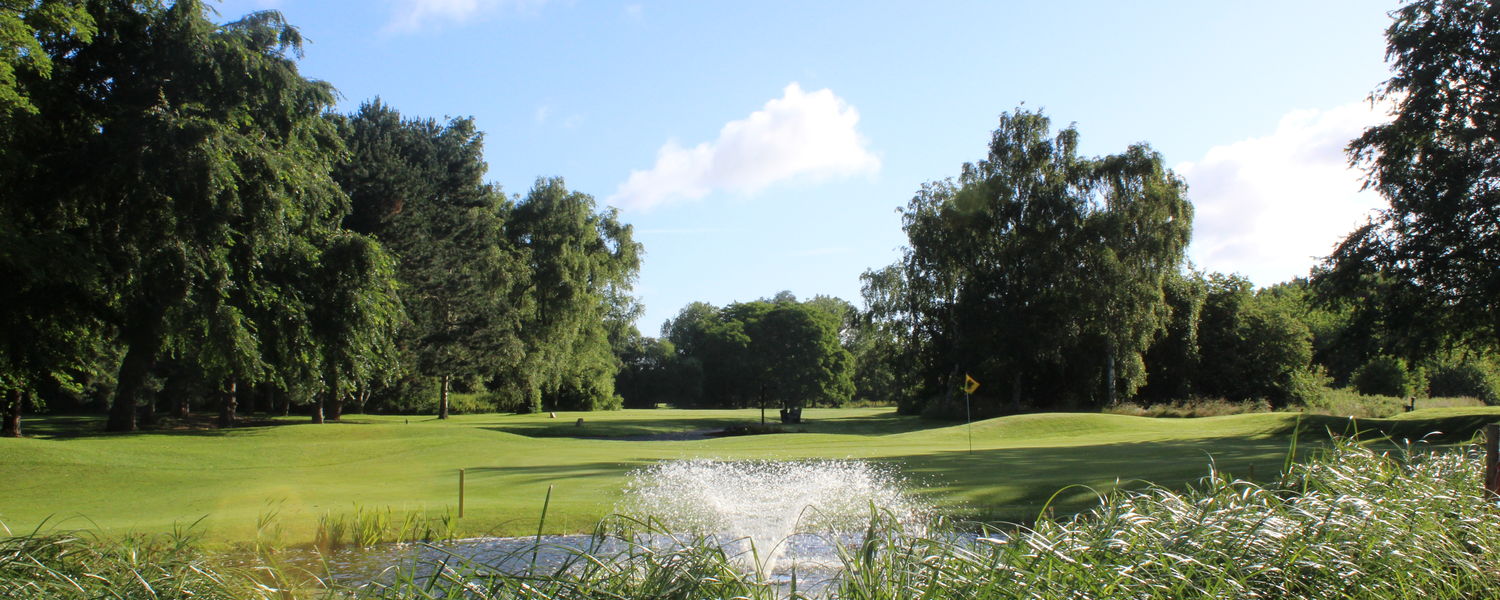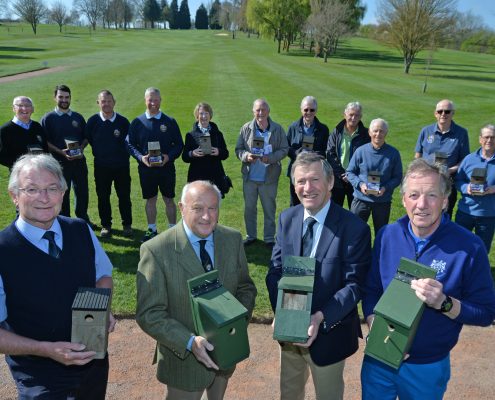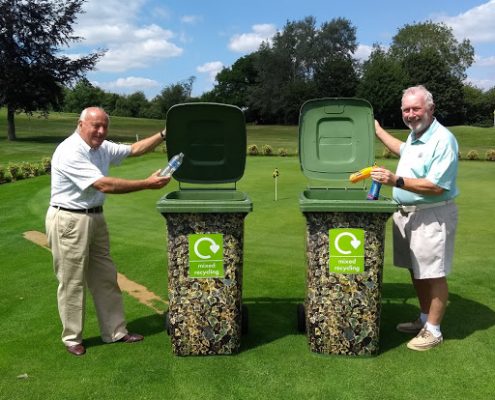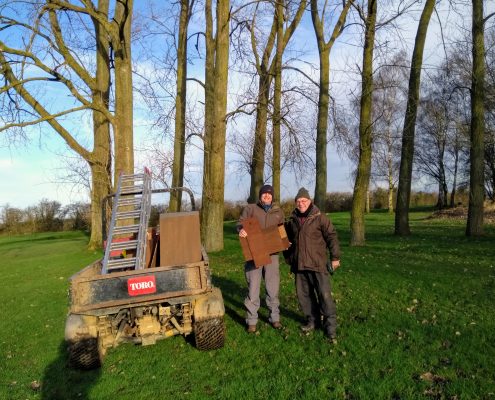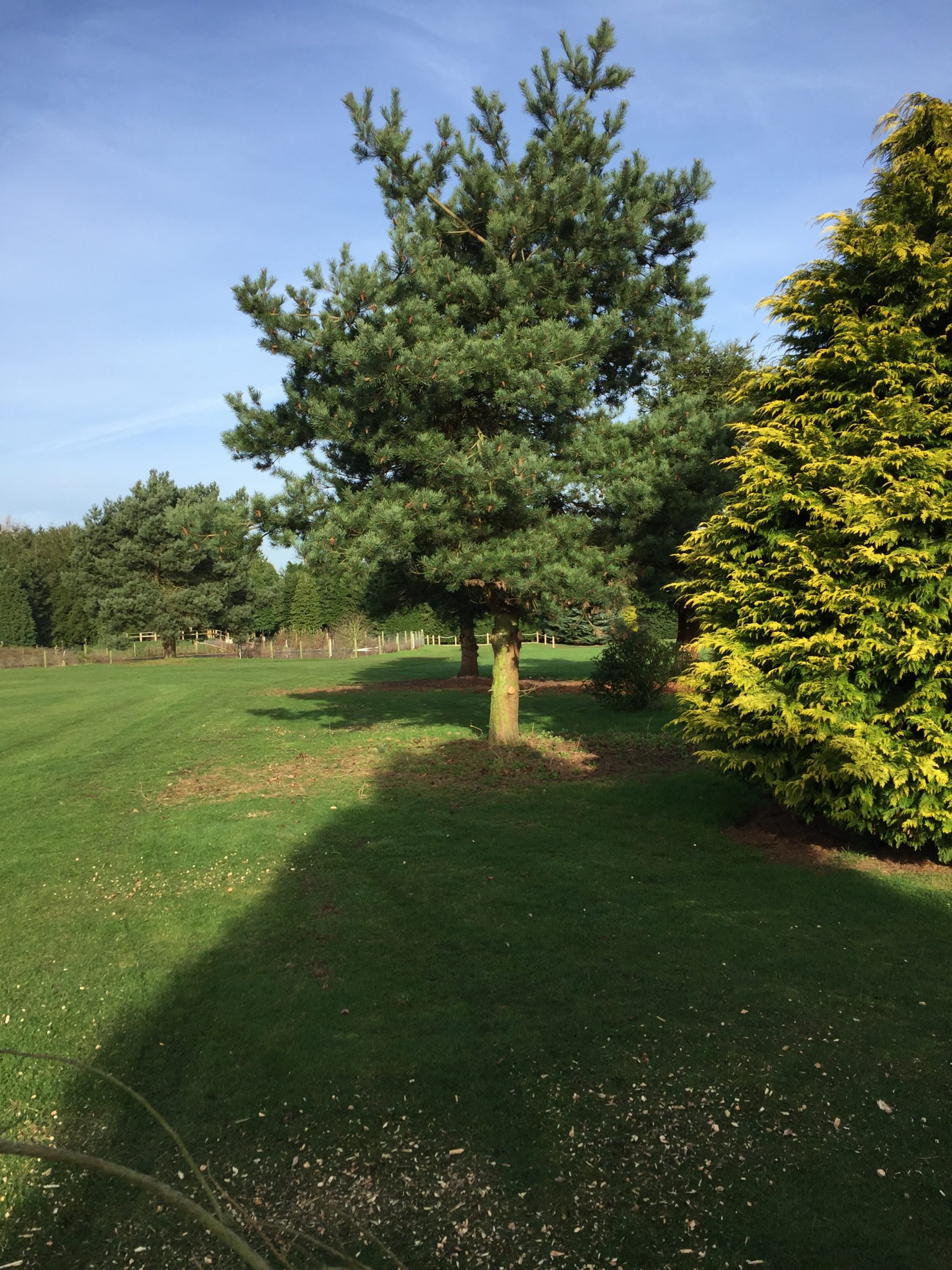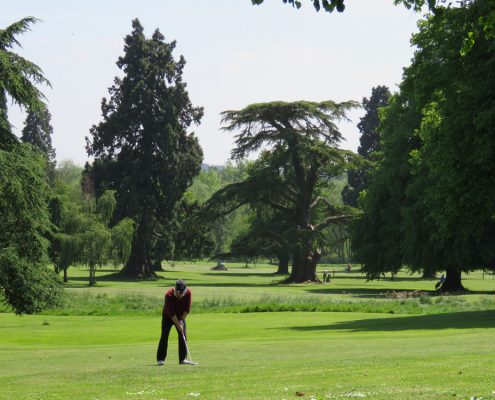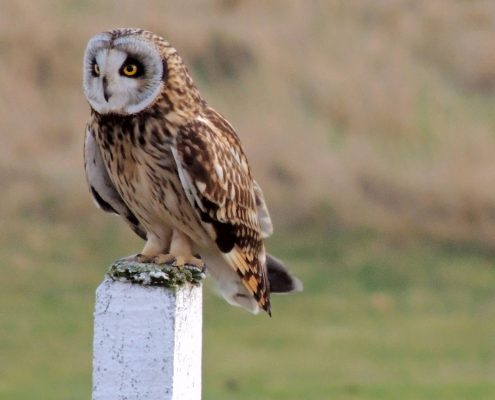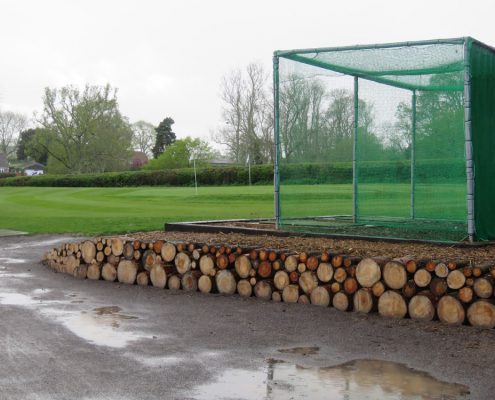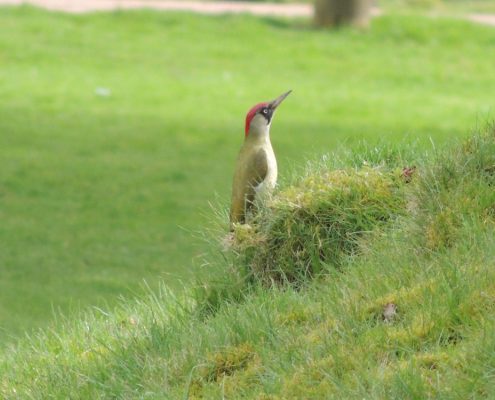The recent examples of storms Ciara and Dennis on successive weekends in February were alarming reminders of the power of Mother Nature. It has to be said that the ensuing trials of golf courses and clubs following deluges like these pale into insignificance in comparison to the greater threat to lives, homes and other businesses.
But golf is suffering from the wettest winter any of us can recall and surely now there can be no debate about its root cause. Global warming is here and affecting everybody’s lives, so what is golf doing to combat the threat (as best it can) and is the industry as a whole getting greener to reflect these changing times?
We asked a number of local greenkeeping teams from all over the region for their thoughts and also the opinions of the industry chiefs, we also delve into the world of the ecologically friendly clubs and what they are doing to both preserve what they have already had and also encourage the return to their courses of endangered wildlife species.

From the England Golf website
Golf can be a real force for good. It’s great for health and wellbeing and it can also show the world what good environmental management looks like.
Aside from doing your bit for the planet, going green has plenty of other benefits. It can save a typical club around £30,000 a year. There are reduced operational risks and insurance discounts. Less pollution and chance of prosecution. Not to mention the improvements you’ll see in your reputation.
Eco-kings of the hill
To the edge of our region in Herefordshire, and up on top of Bradnor Hill at Kington GC their heathland and free draining course drains away the rain better than most. A nature sustainable environment teaming with wildlife, and not always of the common variety.
We visited on the ecology topic, Kington was recently nominated in the GCME awards for the Environmental Golf Club of the year, they didn’t win but what they are doing here is quite unique, something that all of the club’s members are eagerly involved with too.
MG spoke to Head Greenkeeper Alun Chricton and during the chat in biting cold winds he took us up the fabulous 18th hole, somewhere near the tee to show us what has been constructed here.
Kington is National Trust land – they actively encourage the ever-present tree species, natural flora and fauna to flourish here which also incentivises the insects, rodents and their predators to become regular visitors too.
But the main reason for the nomination was the preservation of the adder, a poisonous reptile but an endangered one too, and as Alun explained they go to great lengths here to play their part in its battle for survival.
Kington has 14 adders and the greenkeepers and the club members know them all by their individually unique looks, the members are most helpful in recording sightings and where they saw them on the course. It is vital information for Alun and his team to create a safe environment for them to flourish, their numbers have more than doubled in the last three years.
It’s not an easy task to protect them, baby adders, in particular, make easy prey for the frequent visiting buzzards and hawks. But Alun and team have their backs.
“We’ve built three hibernacula – shelters for the adders to make their homes in, covered in ferns and fauna to make them hidden from sight from above, with enough entrance and exit space for them to slither through. They are all placed close to dense areas of bracken and scrubs meaning they can traverse the course pretty safely when they are out and about looking for a mate, it’s only the trolley paths where they are ever really in the open with the pathway we’ve made for them.”
It’s not just the adders at Kington, their award-winning habitat around the golf course is encouraging new tree species to flourish as well as rare birds such as the snow bunting and the golden plovers, Alun always knows when they are in town – “word gets around quick when we have a rare bird spotted, the twitchers are soon driving up that hill!”
The beginning of the eco-journey
Stratford Oaks GC hit the headlines a couple of years ago when they became member-owned and run, taking over from a previously proprietary owned establishment. The team effect here has now led them to begin their ecological journey on the course, led by Assistant Head Greenkeeper James Cleaver who explained to us what will be going on in the coming months.
“Big changes are happening with the members fully at the forefront, many of who give up their free time to help run the club. Where I come in is with the GEO on course ecology programme trying to get us on to a more sustainable road well into the future.”
Warwickshire wildlife came in to have a look around initially, the club was actually surprised in how far they are down the path anyway, a lot more so than was first thought.
“We have a triple SSSI site all around us so we have to be careful about what we are to put in place. We’ll be creating a wildflower meadow in a small corner of the course and also a grassland area is going in too.”
“The members who are coming on board are putting in bird boxes, including new ones for barn owls and also for kingfishers by the edge of the lakes. We have a local deer population, badger and loads of birds of prey, but one of the main aims of the programme is to try and attract the rarer types of birds here.”
“From a greenkeeping perspective I’m looking to encourage the return of the starlings to the fairways here, we’re being pecked to death by the crows digging for worms, apparently the starlings make a cleaner job of it.”
A balancing act – Is it sustainable to use pesticides, or is it more so facing scarring on the greens then buying seed and having to feed them in order to grow them in?
“ I take it day by day and it’s a nice to think pesticide-free for the eco-friendly effect – but when you’re running the risk of spending more bringing back a green that could have been sprayed appropriately in the first place it becomes a dilemma. It’s swings and roundabouts and every greenkeeper is likely to have a different view on this, greenkeeping is very site-specific.”
At the sharp end – Greenkeeper thoughts
Over the way, at Stratford-On-Avon GC they are set on a more fortunate sand base, and rarely close, but such was the effect of Storm Ciara when we visited, this was one of those rare occasions. We got a chance to walk the course with head GK Chris Bromley to find out what they are up to.
In ecological matters, they are as busy a club as anyone, firstly on a spiky subject.
“There’s a member at the club whose daughter owns a hedgehog sanctuary, we are releasing them on the site once they have gone through their rehabilitation process. There’s areas on the edges of the course we’ve not mown and left long to encourage all species of wildlife including our deer population, so we’ve put in some hedgehog boxes and feeding stations too. The food seems to disappear quickly, whether that’s the hedgehogs or the rabbits and badgers we’re not sure but someone is getting the benefit.”
Other wildlife encouraging goes on including bird and bat boxes plus a recently installed bug hotel.
Climate concerns
“In the last decade through climate change we’ve really noticed a difference in the seasons, 10 years ago in October it was time to put the mowers away, now we’re finding we’re cutting 12 months of the year, the average temperature in the winter now is more than warm enough for grass growth.
As Stratford is on a sand and gravel base they can aerate their fairways and greens more often than most even in periods of wet conditions, “we’ve upped our cycles of aerations, greens, fairways, tees, approaches, just to help it drain better. Where we’d flood following 20-30mm of rain, because the water level is so high at the moment 10mm is enough, the water doesn’t have anywhere to go.
Industry evolution
“ We’re on a similar path as the car industry really – there’s a lot of electrical stuff coming out, getting rid of diesel and petrol mowers. America are big on prototype electrical fairway mowers at the moment, that’s the way the world’s going, it’s a little way off yet because they need to solve the battery power issue, there are 10 hectares here, so that will take some charge.”
November ’19 – cutting the Stratford greens
Pesticide disappearance “ Worms are the big issue in the industry, they love the wet ground and we’ve noticed a lot of worm casts. We’re changing our ways and getting people out brushing and caning by hand now before cutting, it’s become a two man job now rather than one.”
“I think it’s going to get worse before it gets better, a lot of people are trying to go fungicide free which sends us back in time a little trying to combat the diseases – old cultural practices, spraying more with harder metals like we used to. We haven’t gone down that road yet because the research data isn’t there to support going fungicide free but the old methods do get results. However, a lot of what we do comes down to timing, if we miss a window to spray just by a couple of days it can be a serious issue.”
The appliance of science
“Everything is becoming so scientific, it’s becoming a more challenging industry, we record everything and judge treatment schedules and what chemicals to use based on data and figures collected and long range forecasts etc – having a weather station onsite helps us a lot too. Every club and course has different challenges to face – you have to adjust your methods to what your site gives you.”
More scientifically orientated than most, Stratford even has its own tree map, set up on a tablet which logs the location of every tree on the course and their health and also potential danger to golfers following periods of windy weather. Should one get felled, its presence needs to be removed from the map.
MHGC – Small club, big ideas
At the recent GEO conference and awards ceremony in Harrogate, a team of eco-friendly warriors from Market Harborough GC in Leics were delighted to get up on stage and become the first winners of the Home Unions National Award. What they are doing here could in time become a valuable blueprint for the future for the smaller member clubs out there who are keen to make their golf courses important conservation areas.
Pictured third from the left is ex-Seniors captain Bob Roberts. In January 2019 he formed a steering group along with two other members, Jim Jacobs and Steve Winder. Naming it ‘A Greener Operation’, they created the club’s first environmental policy made up of seven strands and took it to the directors.
Bob was aware at the time that a budget for the scheme was unlikely: “The directors were very supportive and the plan became club policy in February 2019. This is a golf club which is not in a good financial position, so we decided not to ask for a budget or a levy on member subscriptions. Instead, we asked for donations and found a sponsor (Avatar Dining, a Market Harborough restaurant). In the future, we will consider applying for small grants from the various trust funds that are out there.”
Some of the other strands, for instance, water and energy usage, are major expenditure issues, so they are on the back burner for now. They hope to be able to tackle them in the coming years.
Three of the strands got underway, all low-cost ones but valuable parts of the strategy: wildlife and nature conservation, waste and recycling, and education and training for the members and staff. As you can see they have made a space on the notice board for A Greener Operation, and members have been keen to spot the wildlife on the course and record their sightings in the book.
“We felt that it was important to have a proper policy which would be quite far-reaching and long term, and needed to be embedded in the policy and strategy of the golf club,” Bob added.
“When we were drawing up this policy we used a template which at the time was published by England Golf. They are partnered up with the GEO On course programme and EG helped us to sign up for the first year of that programme as a case study of how a smaller club can go about things.
We’re not going to be continuing with Oncourse, preferring to run our own action plan and we will be developing our own data monitoring programme in-house. That’s not to say that Oncourse isn’t a valuable resource because it is. The trouble is, it’s all very well and important for bigger clubs to have it, for instance, you can’t host an R&A event with being GEO certified, but we’re hardly going to be in the running for one anyway are we?!”
MHGC argued that the smaller clubs would get more benefit from a simpler tool, and England Golf are now interested in the concept of a three-tiered award system for GEO, gold, silver, bronze accreditations for instance.
But maybe Market Harborough’s most telling effect going forward is what they want to do in their local community and with other golf clubs in Leicestershire.
In conjunction with the Leicestershire & Rutland Wildlife Trust, the club will be organising seasonal meetings to swap ideas with the other clubs in the counties who might be keen on going down a similar path or who already are. The first meeting is at Longcliffe GC on March 20th.
Summing up Bob added – “I feel very strongly about environmental matters. There is huge potential for golf clubs to act not just as organisations and landowners who can support wildlife, but as institutions in the community who have reach and influence, via their members and families of members and the young people who come to the club, to all take seriously the responsibility of looking after the environment.”
With that in mind, Bob, together with MHGC head pro Kegan Jamieson and head greenkeeper Chris Weir, are planning to reach out to the local primary schools to offer the kids half a day to come along to the golf club, help with the bird box monitoring, make a bug B&B and similar activities, plus they can hit a few balls too on the range with Kegan, getting into golf in an entirely new way!
Eco-snips
Aqualate GC – Head GK Daniel Groome
“Last autumn we purchased a Timberwolf chipper, so when we crown lift the trees on the course the branches are chipped into a trailer, we then use the wood chip for paths around the course.
The benefits are that the golfers can find their balls under trees more easily. The paths save the course from wear and tear plus golfers aren’t getting muddy trousers!
The paths are environmentally friendly compared to buying in stone from quarries. Less fuel used, less carbon into the atmosphere and also putting the carbon that the trees absorb back into the ground.”
Coventry GC – For the otters (and their friends)
Coventry are the Midlands originators, the first club in the region to focus on eco-friendly matters and the first in England to win a GEO award back in 2012. They’ve continued the good work and last year achieved GEO re-certification for the second time.
Among many other things too numerous to mention has been a successful scheme in conjunction with Warwickshire Wildlife Trust to help out the local otter population, rare but proven visitors to the River Sowe which runs along the course. With member help, they constructed a tunnel leading from the river to a disused small shed, now an Otter Holt. They also installed a CCTV camera to record the sightings and far from being just the otters that use it! Uninvited guests such as foxes, badgers, rabbits and smaller rodents are interested too.
There has been an otter in there and unmistakably so, take a look at the YouTube Coventry GC compilation film here of all of the wildlife spotted on the course at night, the otter appears exactly on the two-minute mark.
Charnwood Forest – The old fashioned methods still work
Set on an SSSI site with a rich history attached to it that dates back to prehistoric times, Charnwood Forest GC in Leics, with the assistance of Natural England are active in restoring their natural heathland habitat as is the case with many such clubs all over the UK. What is unusual in their case is that their three-man greenkeeping team, led by head GK Tim Allard have employed 11 extra four-legged helpers with their task.
Originally of Scottish origin, the hardy and striking looking Soay Sheep flock they have here are performing a vital role grazing on the green shoots of bramble and birch trees that attempt to re-grow after being removed in favour of the return of gorse and heather. In inaccessible areas for machinery, the sheep have been indispensable, their diet is balanced nicely by them recycling the grass cuttings from the greens and fairways too from this James Braid designed course.
Industry thoughts – By James Hutchinson – Ecology and Sustainability Manager (BIGGA)
Over the past four years with BIGGA I have visited approximately 400 golf courses to offer ecology and environmental sustainability advice. It is clear from that experience that the largest impact on greenkeepers and the environment is undoubtedly the weather. This year it is the mild winter and flooding; 2018 was the polar opposite with first the ‘Beast from the East’, then the drought and extreme heat – both of these had adverse effects on our golf course wildlife; however, nature has a habit of bouncing back when times aren’t so good.
I was recently made aware that hedgehogs are not hibernating this year as their receptors are suggesting it’s not time to sleep due to the warm weather we are experiencing. This is a disaster as there is little or no food for them to eat (snails, slugs, worms, birds’ eggs) and as a result, many will not make it through the winter. With that in mind, greenkeepers on some courses are placing dog/ cat food out for any passing hedge pigs, along with creating overwintering environments just in case the weather takes a turn for the worse.
On another note, stag beetles, once only found in the more Southerly counties and once in rapid decline, appear to be enjoying the warmer weather, certainly in London anyway. Golf courses have historically tidied woodlands up too much and removed decaying timber from the site; greenkeepers are now stacking timber both horizontally and vertically which offers a suitable habitat for the aforementioned insects. We have literally hundreds of different wildlife projects on the go!
As with all projects, communication is key. As time goes on I am asked to give presentations to more and more golf club members. A golf course eco-walk generally has around 30 attendees, whereas a presentation in the clubhouse can attract over 100 interested golfers. My work at BIGGA sees me develop environmental plans (woodland management, wildflower encouragement, holistic thinning of roughs and so on) for golf courses, and part of that is to undertake an education session with the greenkeepers and/or the members.
On occasion, I do get a negative comment including “It’s always been done that way, why change it?” Or “You’re removing all the trees” which is never the case – I merely look at the wildlife that is already there and how it and more can be encouraged. If removing a section of trees returns the course back to its original state, this applies in particular to heathland courses, and the turf health improves because we’ve introduced better airflow and sunlight, then the trees should go.
The Government campaign ‘Plant a Tree in ‘73’ was adopted a little too enthusiastically on many golf courses – those trees now require management and were often planted in inappropriate places. I’m a self-confessed dendrophile, by the way, I don’t take the removal of trees lightly.
The R&A’s Golf Course 2030 initiative, which BIGGA is heavily involved with, will go some way to assisting the UK’s dwindling critters and will be hugely beneficial to our golf courses.
Useful links – to find out more about golf course ecology and what your club can do to help your local environment, check out the following.
www.englandgolf.org/greenergolf
https://sustainable.golf (GEO on course foundation)


